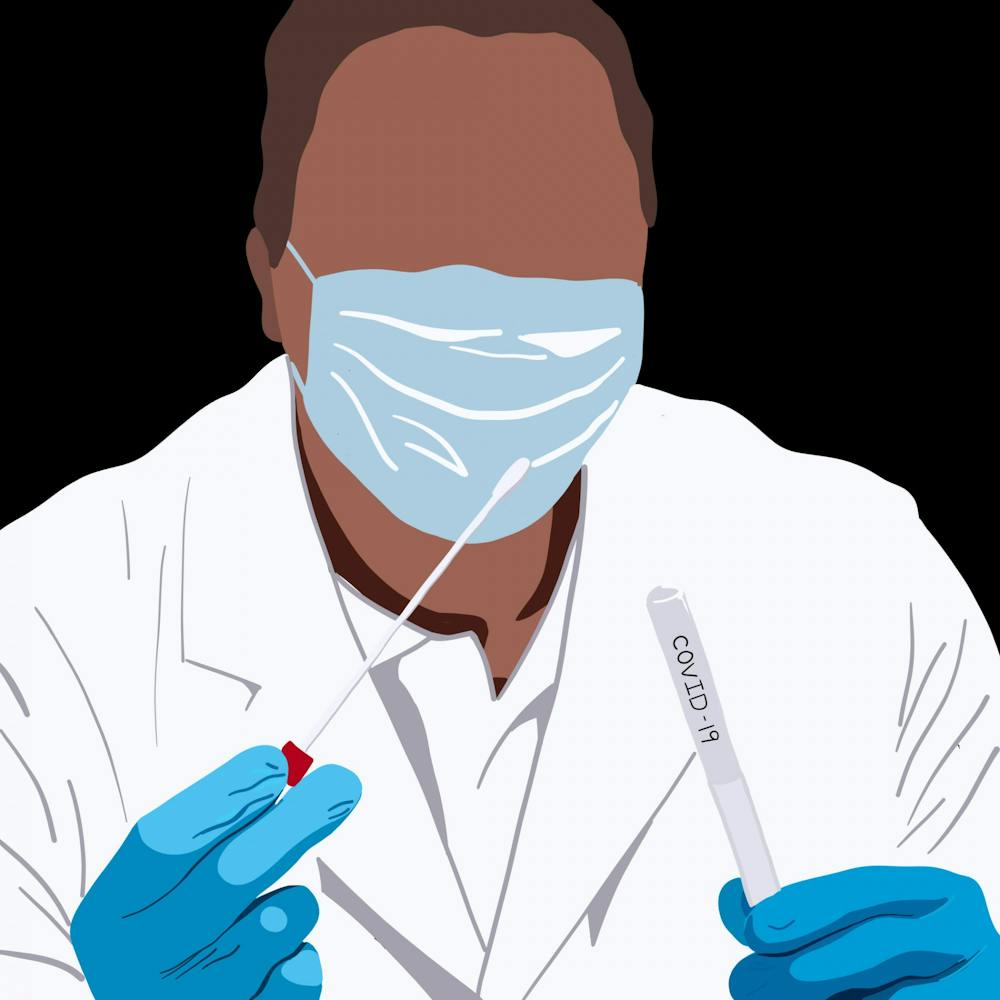The University of Richmond enters the Orange Stage of its COVID-19 Physical Distancing Framework today, Oct. 7, according to an email from Executive Vice President and Chief Operating Officer David Hale and Executive Vice President and Provost Jeffrey Legro sent to faculty, staff and students on Oct. 5.
UR’s move from the Red Stage, the most restrictive stage of UR’s four-stage framework, to the subsequent Orange Stage allows for some loosened regulations but still maintains many safety protocols, such as staying at least six feet away from others, wearing face coverings, completing daily symptom screenings and custodial services continuing to disinfect frequently touched surfaces daily, according to UR’s Physical Distancing Framework.
“We want to emphasize that the move to the Orange Stage does not mean we are relaxing our important health and safety protocols or letting down our guard,” Hale and Legro wrote in the Oct. 5 email. “By design, this is a small step.”
Significant changes in the Orange Stage include increased maximum attendance for both indoor and outdoor gatherings and an increased percentage of people undergoing prevalence testing, according to the email.
The deliberation process to move to the Orange Stage took roughly three weeks and input was sought out from groups across campus, Hale said. Those groups included the Student Development leadership team, resilience working group and its situation management subcommittee, President’s Cabinet, academic deans, University Staff Advisory Council and Faculty Senate, Hale said.
The potential stage shift was discussed during a Faculty Senate meeting on Sept. 25 and a Faculty Senate executive committee meeting earlier that week, said Thad Williamson, president of the Faculty Senate and professor of leadership studies and philosophy, politics, economics and law.
"On a decision like that, we are an important constituency or stakeholder group, a very important group, but we are not the decision makers," Williamson said.
After input from campus groups, the administration brought the recommendation to move to the Orange Stage to Ronald Crutcher, UR president, who approved of the decision, Hale said.
Among and within campus groups there were varying opinions on whether to move to the Orange Stage, both Hale and Williamson said.
“I do think that this is a relatively modest shift,” Williamson said. “I don’t think it’s a big change in policy. I think the hope is that there may be some benefits in terms of student wellbeing without sacrificing health, and I think the main concern that I’ve heard, the main concern is people interpreting Red to Orange as a loss of vigilance. Because if it is, then we’re going to have a big problem.”
In the Oct. 5 email, Hale and Legro wrote that they had received reports of students feeling isolated because of some of the requirements of the Red Stage.
Overall, Hale emphasized that the shift from the Red to Orange Stage would not be drastic.
Enjoy what you're reading?
Signup for our newsletter
“Every decision the university makes as it pertains to COVID[-19] comes with some risk,” Hale said. “I think the risk is very small here, and that was our judgment. And, we felt the benefits of it — again giving our students just a bit more flexibility in their day-to-day lives and for student organizations the ability to meet, again following all the requirements — we just determined that that's a really important benefit to our students.”
Orange Stage prevalence testing
The percentage of people undergoing COVID-19 prevalence testing will increase by 5% for undergraduate students, T.C. Williams School of Law students, faculty and staff, according to Hale and Legro's Oct. 5 email. Testing for undergraduate students will increase from 10% to 15% and testing for law students, faculty and staff will increase from 5% to 10%, according to the email.
The percentage of School of Professional and Continuing Studies and master's of business administration students undergoing prevalence testing will remain at 5%, according to the email.
Administration decided a 5% increase in testing for most groups was sufficient because prevalence testing thus far has yielded few positive COVID-19 results, Vice President and General Counsel Shannon Sinclair said.
“We wanted to make sure we didn’t end up with an increase of cases that went undetected,” Sinclair said of the decision to increase prevalence testing. “Not that you could necessarily tie it to the move to Orange, but, you know, whenever you make a change in circumstances, you want to make sure that you’re not creating unintended consequences.”
Prevalence testing for undergraduate students will occur weekly in the Orange Phase, with 10% being tested one week and the remaining 5% being tested the following week, for a total of 15% of undergraduate students being tested every two weeks, Sinclair said.
“Now that we’re moving to testing 15% of our undergraduate students, we’re going to switch up the timing,” Sinclair said. “So of that 15%, two thirds will be tested one week — so we’d call that ‘Week A’ of our two-week cycle — and the other third will be tested in ‘Week B.’ So the difference will be there’ll be testing of undergraduates on a weekly basis.”
Undergraduate students who can be chosen for prevalence testing include all students who did not sign up to be remote, including students living both on and off campus, Sinclair said.
Faculty, staff and law, SPCS and MBA student prevalence testing will occur every two weeks as it did in the Red Stage, Sinclair said, noting that such testing would be in “Week B.” As was also the case in the Red Stage, faculty and staff are not required to be tested if selected but are encouraged to do so, Sinclair said.
In the Orange Stage there will be a change to how UR manages COVID-19 test results, Sinclair said.
“Previously for students, all of the test results — both negative and positive — went through the Student Health Center," Sinclair said. "We really want the Student Health Center to be able to focus on caring for people who test positive and for people who have any other illness, you know, that we have in any normal year.
"So what we’re going to do is the Student Health Center will deal with the results of people who may test positive, but we have set up a new email notification system for all of the students who test negative.”
SecureHealth, the healthcare provider managing the testing process, has told UR administration that they are equipped to handle an increase in testing, Sinclair said.
Orange Stage gathering protocols
During all gatherings, students, faculty and staff are still required to remain six feet apart and wear face masks, according to the distancing framework.
Students are able to host on-campus students from other residence halls and apartments in their residences, with limited occupancy rules continuing from the Red Phase, according to the framework. Off-campus visitors or overnight guests are not allowed, according to the framework. Residence hall lounges will also be open with set maximum capacity levels, according to the framework.
Indoor on-campus gatherings can now have up to 25 people, as opposed to a maximum of 10 people during the Red Stage, and UR-sponsored and approved outdoor gatherings hosted by recognized student organizations can now have up to 100 people, as opposed to a maximum of 50 people during the Red Stage, according to the framework.
Events, Conferences and Support Services staff will begin increasing seating capacity under the white tents located across campus, support services supervisor Ryan Phillips said.
“We’ll start adding more equipment — tables and chairs — all the while keeping everything in a social distance kind of environment,” Phillips said.
Phillips said the seating capacity of indoor spaces would remain roughly the same and that Support Service’s focus was on increasing seating in outdoor spaces.
Department leaders can increase the number of staff working on campus but should limit the capacity of all work areas to 50% of normal staff levels when possible, according to the framework.
Contact managing editor Emma Davis at emma.davis@richmond.edu.
Support independent student media
You can make a tax-deductible donation by clicking the button below, which takes you to our secure PayPal account. The page is set up to receive contributions in whatever amount you designate. We look forward to using the money we raise to further our mission of providing honest and accurate information to students, faculty, staff, alumni and others in the general public.
Donate Now



